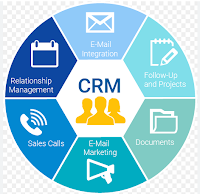An Enterprise Resource and Process Management System (ERPM) is a comprehensive software solution that integrates various business processes and resources within an organization. It helps businesses streamline their operations, improve efficiency, and facilitate cross-functional collaboration. Here's an example of an ERPM system and its features:
Enterprise Resource Planning (ERP):
The ERPM system includes an ERP module that integrates core business functions such as finance, human resources, procurement, and manufacturing. It provides a central database for managing and sharing critical data across departments, eliminating data silos, and improving data accuracy.Process Automation:
The ERPM system automates repetitive and manual tasks across different business processes. It helps businesses streamline workflows, reduce errors, and improve overall operational efficiency. For example, it can automate purchase order processing, invoice approval, or employee onboarding processes.Financial Management:
The system includes financial management capabilities such as general ledger, accounts payable, accounts receivable, and budgeting. It helps businesses manage financial transactions, generate financial statements, track cash flow, and ensure regulatory compliance.
Human Resources Management:
The ERPM system includes modules for managing human resources processes such as employeeonboarding, performance management, time and attendance tracking, and payroll. It helps streamline HR processes, manage employee data, and support workforce planning and development.
Supply Chain Management:
The system facilitates supply chain management processes, including procurement, inventory management, and supplier relationship management. It helps optimize procurement decisions, track inventory levels, and improve collaboration with suppliers to ensure timely delivery of goods and services.
Customer Relationship Management (CRM):
The ERPM system may include a CRM module that enables businesses to manage customerinteractions, sales processes, and marketing campaigns. It helps businesses track leads, manage customer relationships, and improve customer satisfaction and retention.
Business Reporting and Analytics:
The ERPM system provides advanced reporting and analytics capabilities. It enables businesses to analyze data from various sources, generate customized reports, and gain insights into key performance indicators (KPIs). This helps in making data-driven decisions and identifying areas for improvement.Document Management:
The system includes features for document management and collaboration. It allows users to store, organize, and retrieve documents in a centralized repository, facilitating easy access and version control. It also supports document sharing and collaboration among team members.Integration and Connectivity:
The ERPM system integrates with various external systems, such as third-party applications, supplier portals, or customer portals. It enables seamless data exchange, improves data accuracy, and avoids duplicate data entry.
Security and Access Control:
The system incorporates security measures to protect sensitive data and ensure appropriate accesscontrols. It enables role-based access, data encryption, and audit trails to maintain data integrity and compliance.
By implementing an Enterprise Resource and Process Management System, businesses can streamline their operations, improve collaboration, and enhance overall efficiency. It helps integrate various business functions, optimize processes, and provide real-time visibility into key business data. This enables better decision-making, improved productivity, and a competitive edge in the market.











